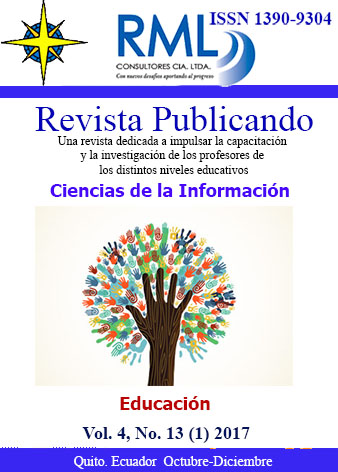Resumen
At present time, one of the most important directions in linguistics is the study of the linguistic consciousness of man, the tradition of research of which goes back to the ideas of W. von Humboldt about the link between the language and the spirit of the people. Among the methods of research of linguistic consciousness, one distinguishes an associative experiment, which is a survey of the informants united by some commonality (language, profession, territory of residence, etc.) for revealing their associations-reactions to a certain stimulus. The following methods of linguistic analysis were used in the paper: generalization and systematization, analytical method, descriptive, comparative methods, and also the method of association experiment, etc.
The association experiments with 500 students of the city of Kazan, the native speakers of the Tatar language,were conductedIn the course of the research. The results were compared with the materials of the “The Slavic Associative Dictionary” (2004).
This paper analyzes and identifies the general and specific features of the associative fields of the lexemes “Ñш”in the Tatar language and “работа”/“work” in the Russian language. An analysis of the responses received by the respondents showed that the associative fields of the lexemes “Ñш” in Tatar and“работа”/“work” in Russian coincided in general. However, Tatar native speakers have more associations with the components of the meaning “Ñ‚Ñжелый”/ “heavy”, “трудноÑÑ‚ÑŒ”/“difficulty”, etc., often characterizing physical labour. Russian-speaking young people more often associate their future with comfortable mental work indoors.
The associations of Russian speakers are distinguished by a wide variety of associates with negative connotations, reduced stylistic characteristics, and the use of answers of paremiological origin.
Thus, the association experiment allows of revealing the content systemacyof thetypeofconsciousness behind the word in different languages, and confirms the uniqueness, the inimitability of the image of the world of each culture. The research to have been carried out has practical significance, since the obtained results are a valuable and sufficiently reliable material for studying certain fragments of linguistic consciousness, national-specific phenomena, knowledge, value orientations, and so on.
Referencias
Albina F. Zagidulina, GelinyaKh. Gilazetdinova, Elvira A. Islamova. (2016).Associative fields of lexemes “Homeland” and “Vatan” in Russian and Tatar linguistic consciousness // Journal of Language and Literature. Vol. 7. No. 2. – рр. 289-292.
FanuzaH. Gabdrakhmanova, LeilyaR. Mukhametzyanova, LeysanKh. Shayakhmetova.(2016). Ðssociative experiment is an effective method of research of the national character (on the material of Tatar and Russian linguistic cultures) // Journal of Language and Literature. Volume 7, Issue 3. –рр. 211-216.
Gulgena N. Khusnullina, Elvira A. Islamova, Ramziya M. Bolgarova. (2016).The study of linguistic consciousness of students based on the material of association experiments // Modern Journal of Language Teaching Methods,Special Issue, pp. 149-154.
Gulshat Nailevna Galimova, Alfiya Shavketovna Yusupova, Elvira Nikolaevna Denmukhametova, Gulnaz Rinatovna Mugtasimova.(2016).Tatar proverb language as the reflection of western and eastern // Modern Journal of Language Teaching Methods,Special Issue,рр. 161-165.
Humboldt W. Von. (1985).Language and the Philosophy of Culture.–Ðœ.:
Progress. – 448 p.
Kayumova A.R., KonoplevaN.V.(2016). Tatar Phraseological Units with the Component Һава(Air) and their English Counterparts // Modern Journal of Language Teaching Methods. – Special Issue (November). pp. 193-198.
Mubarakshina A., Fedorova N., Fattahova N. (2016).Associative-semantic field of "nravstvennost" in modern Russian language // Journal of Language and Literature. Vol. 7. No. 2. – рр. 280-284.
Mukhametzyanova L., Shayakhmetova L. (2014).Application of Associative Experiment in Forming the Foreign Communicative Competence // English Language Teaching. 7(12), pp. 60-64.
Sibgaeva F.R., Zamaletdinov R.R.,Zamaletdinova G.F. (2015).Reflection of Tatar inner world through concepts // Journal of Language and Literature, 6(3), – pp. 115-118.
Sibgaeva F.R., Zamaletdinova G.F.; Nurmuhametova R.S. (2016). Linguoculturological specific features of phraseological units of the Tatar language// Modern Journal of Language Teaching Methods. Special Issue. – pp. 116-119.
UfimtsevaN.V., CherkasovaG.Ð., KaraulovY.N., TarasovЕ.F. (2004). The Slavic Associative Dictionary: Russian, Belorussian, Bulgarian, Ukrainian. –Ðœ.,–800 p.
Weissgerber J.L. (1993).Native Language and Spirit Formation. –Ðœ.
Yuisufuva Z., YusupovaÐ.S.,Mugtasimova G.R., Denmukhametova E.N. (2016).Paroemiological units of the Tatar language with culture-specific lexicon // Modern Journal of Language Teaching Methods, , Special Issue, pp.161-165.
Zamaletdinov R.R., Zamaletdinova G.F., Nurmukhametova R.S. (2014)The Lexicon and its Reflection in the Inner World of the Individual (on the basis of the Tatar Language) // Journal of Language and Literature, 5 (4), pp. 333-335.
ИÑәнбәт Ð.С. (2010).Татар халык мәкальләре = ТатарÑкие народные поÑловицы: мәкальләр җыелмаÑÑ‹ : өч томда / Ðәкый ИÑәнбәт. –Икенче баÑма. – Казан: ТатарÑтан китап нәшриÑÑ‚Ñ‹, Т. 1. – 2010. –623 б.
Usted es libre de:
Compartir — copiar y redistribuir el material en cualquier medio o formato
Adaptar — remezclar, transformar y construir a partir del material
La licenciante no puede revocar estas libertades en tanto usted siga los términos de la licencia
Bajo los siguientes términos:
Atribución — Usted debe dar crédito de manera adecuada, brindar un enlace a la licencia, e indicar si se han realizado cambios. Puede hacerlo en cualquier forma razonable, pero no de forma tal que sugiera que usted o su uso tienen el apoyo de la licenciante.
NoComercial — Usted no puede hacer uso del material con propósitos comerciales.
CompartirIgual — Si remezcla, transforma o crea a partir del material, debe distribuir su contribución bajo la lamisma licencia del original.
